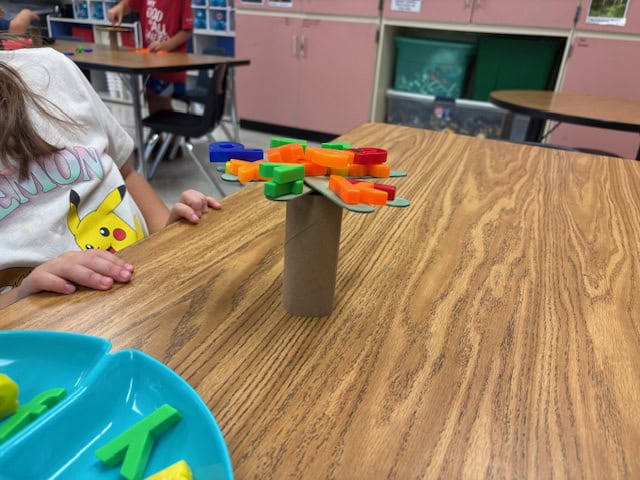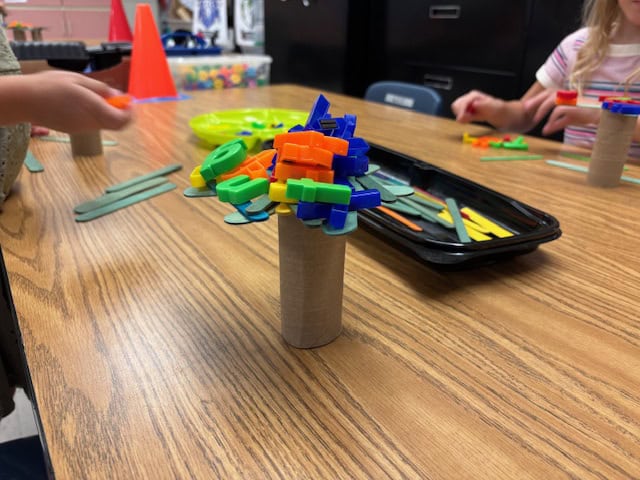Simple Steps, Big Fun!
Remember that scene in every alien movie where the human tries to explain something straightforward, but the alien just stares blankly? Perhaps the alien blinks a few times before responding with a twinkling, confused eye. That was pretty much me, my first time teaching kindergartners about sustainability. I went into that lesson with grand ideas of ecological footprints and renewable resources, and my six-year-olds looked at me like I was speaking a different language. I’m pretty sure someone even cried. My lesson tanked. Hard!!!!
It turns out, teaching our youngest learners about sustainability doesn’t have to be complicated. It doesn’t have to be time-consuming. It just has to be relevant to them and their world. I realized pretty quickly that I was trying far too hard, so I took a step back and reevaluated.
- What did I want my kindergarten students to learn?
- What was the true purpose of their engaging with this topic in my classroom?
- What was my ultimate end goal?
After some reflection, I understood that I wanted something hands-on, with a sustainable element, and most importantly, something short and sweet.
And guess what? It’s absolutely possible to weave foundational sustainability concepts into the very first week of school, even with the wiggliest of learners! It’s about planting tiny seeds of awareness that will grow with them. And sometimes, those powerful seeds come in the form of a good story and a few recycled goods.
Engineering a “Chicka Chicka Boom Boom” of Sustainability!
To launch our sustainability journey, I designed a lesson that was so much fun, my energetic kindergarteners — whom I affectionately call my “aliens” – didn’t even realize they were learning about engineering, stability, and the importance of reusing materials. Inspired by the beloved classic Chicka Chicka Boom Boom by Bill Martin Jr. and John Archambault, we embarked on the Letter Tree Balance Challenge!
Here’s how we did it, step-by-step:
Step 1: Setting the Stage with a Story
First, we gathered for a read-aloud of Chicka Chicka Boom Boom. Giggles erupted as the letters climbed up the coconut tree. We talked about what happened when too many letters tried to squeeze on – “Boom Boom!” – the tree tipped over! This vibrant story provided the perfect, relatable jumping-off point for our engineering adventure.
Step 2: Introducing the Engineering Challenge
Next, I introduced their mission: they were going to become engineers and construct their very own “letter trees” using recycled materials. Our chosen supplies were simple: empty toilet paper rolls and craft sticks. Their challenge? To see how many plastic letters their tree could hold before it went “Boom Boom!” (meaning, before it toppled over).
Watching them explore the materials was truly fascinating. They experimented with how to make their bases stable and their “branches” strong enough to hold the letters. There was an incredible amount of creative problem-solving happening!
Step 3: Test, Observe, and Count!
Once their unique masterpieces were built, the real fun began: the testing and counting! With focused concentration and excitement, they carefully placed letter after letter onto their trees. When a tree finally toppled, there was a collective gasp, followed by a burst of laughter. We then counted how many letters each tree successfully held, celebrating every structural success.

Step 4: Connecting to Sustainable Practices
Afterward, we discussed what made some trees more stable than others. What designs worked best? And here’s where the sustainability connection shone brightest: we talked about how using those “old” toilet paper rolls and craft sticks meant we were giving them a new purpose instead of simply throwing them away. It was a simple, tangible way to show them how we can reduce waste and reuse materials in our everyday lives.
The End Goal of the Lesson: Beyond the Boom!
This lesson was about hands-on discovery, playful learning, and connecting a beloved story to a real-world concept. And unlike my initial “alien-teaching” attempt, this lesson was a resounding success. The children were engaged in every part of the lesson; they learned fundamental engineering principles like stability and balance, and they were joyfully introduced to the idea of sustainability through the simple act of giving an empty toilet paper roll a new life.
So, to my fellow educators, if you’re looking to bring sustainability into your classroom, remember these key takeaways: keep it simple, keep it relevant to your students’ experiences, and most importantly, make it fun!
Want to Read More About Sustainability in the Classroom?
Take a look at some of my other blogs!
